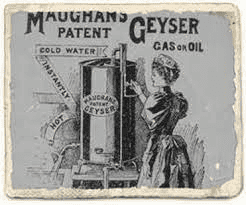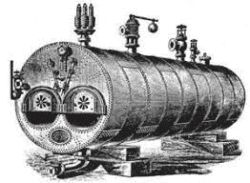The boiler you have represents the many advances made during the Industrial Revolution, but the components are still the same as they were a few hundred years ago. Although there are new developments and ideas, the science that makes a boiler function hasn’t changed much since the Industrial Revolution.
Steam boilers were first used for transportation. In the early days of large ships and trains, fire tube boilers were made out of steel casings with tube sheets welded on either end. The boiler was equipped with a door that could be opened to check and clean it. These boilers were powered by coal or wood, and they had to be cleaned frequently to prevent soot accumulation. These machines may seem primitive and cumbersome to us today, but they were the power behind the Industrial Revolution.
During World War I, a new boiler type was developed that utilised bent tubes rather than straight ones. The boiler was able to be more compact, and could handle cold water more effectively. Cast iron boilers filled the gap left by fire tube and bent-tube boilers, which were not able to produce low pressure steam effectively for heating buildings. The boiler was awkward and heavy but it was a significant development in the field of boilers because it could be manufactured into a variety of shapes and used for low pressure steam applications. For help with today’s boilers, consider Boiler Repair Cheltenham from www.hprservicesltd.com
During World War II, and the subsequent industrial explosion, boilers were further developed. Tube boilers became more efficient and quicker at converting water into steam. Copper was used, but it had to be changed frequently. In the last two decades, condensing heating systems have been used.
Archaeological sites reveal that Romans heated water in large baths. The Romans were using early plumbing techniques in 298-306 AD because they believed that hot baths could heal.
In 1868 in London, an artist named Benjamin Waddy Maughan invented a device for heating water in the home, although it was a little dangerous. The water was heated by a burner using hot gas. The water was heated and then poured into a tub or sink. However, the danger came because there was no flue in the room to remove the gases.
Edwin Ruud was a Norwegian mechanical engineering student who was inspired by this invention to create the automatic water heater. In America, he became the pioneer of domestic and commercial water heating systems.


